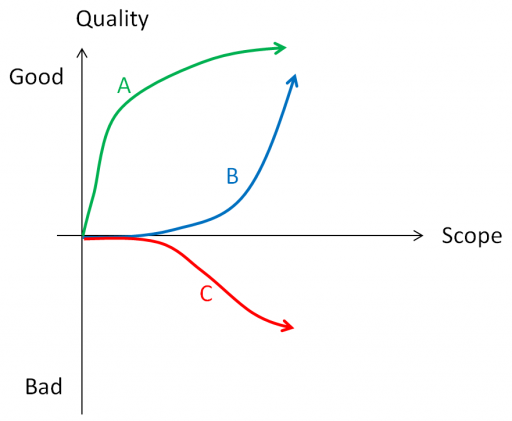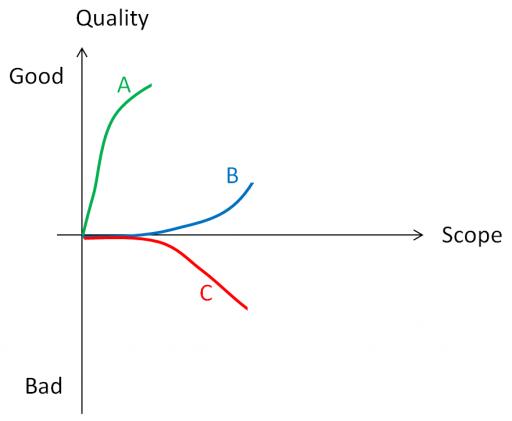There are two ways to go about building a model.
- Plan A proceeds slowly. You build small or simple, aggregate components, and test each thoroughly before moving on.
- Plan B builds a rough model spanning the large scope that you think encompasses the problem, then incrementally improves the solution.
Ideally, both approaches converge to the same point.
Plan B is attractive, for several reasons. It helps you to explore a wide range of ideas. It gives a satisfying illusion of rapid progress. And, most importantly, it’s satisfying for stakeholders, who typically have a voracious appetite for detail and a limited appreciation of dynamics.
The trouble is, Plan B does not really exist. When you build a lot of structure quickly, the sacrifice you have to make is ignoring lots of potential interactions, consistency checks, and other relationships between components. You’re creating a large backlog of undiscovered rework, which the extensive SD literature on projects tells us is fatal. So, you’re really on Path C, which leads to disaster: a large, incomprehensible, low-quality model.
In addition, you rarely have as much time as you think you do. When your work gets cut short, only Path A gives you an end product that you can be proud of.
So, resist pressures to include every detail. Embrace elegant simplicity and rich feedback. Check your units regularly, test often, and “always be done” (as Jim Hines puts it). Your life will be easier, and you’ll solve more problems in the long run.
Related: How to critique a model (and build a model that withstands critique)



3 thoughts on “Model Quality: the High Road”